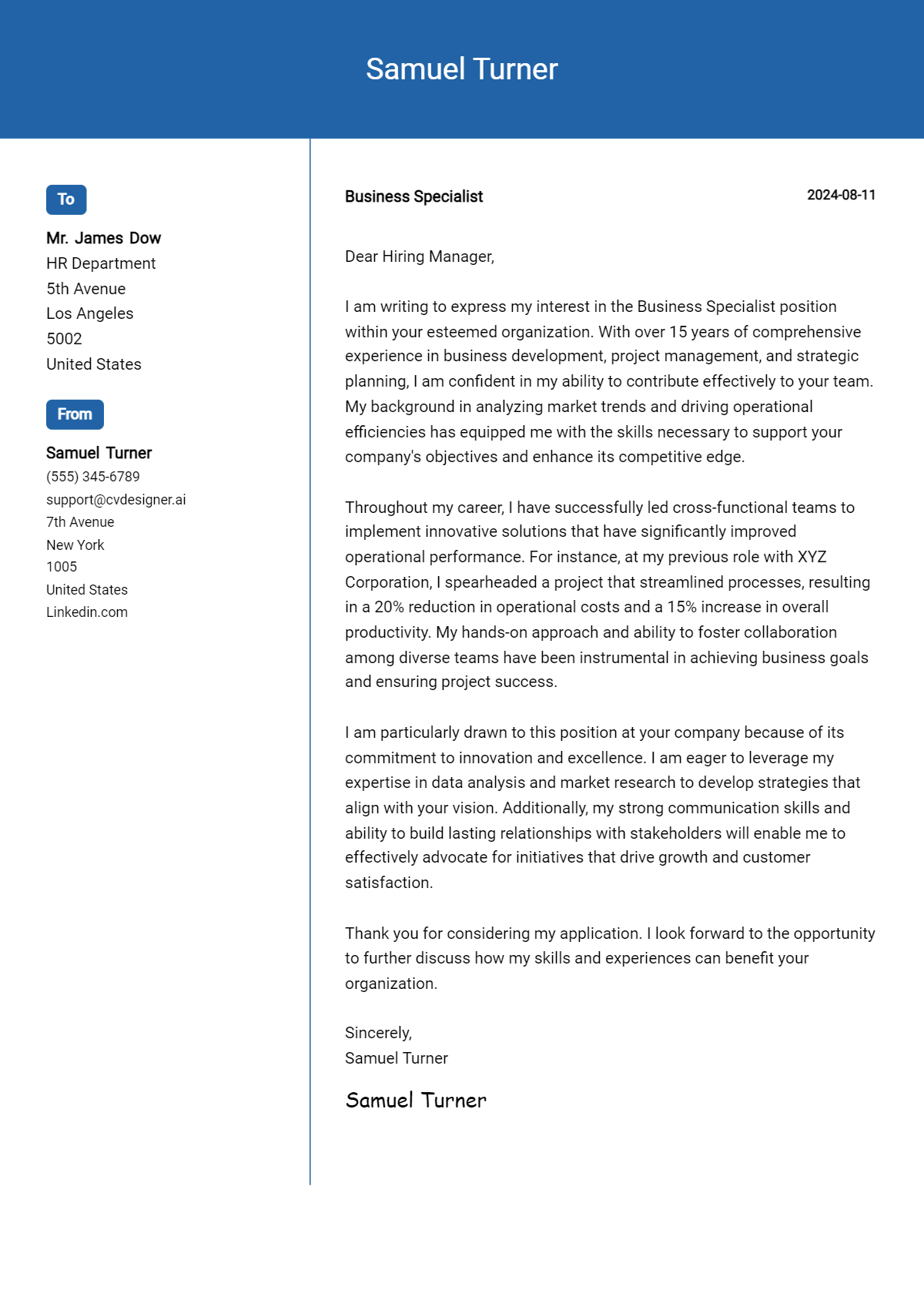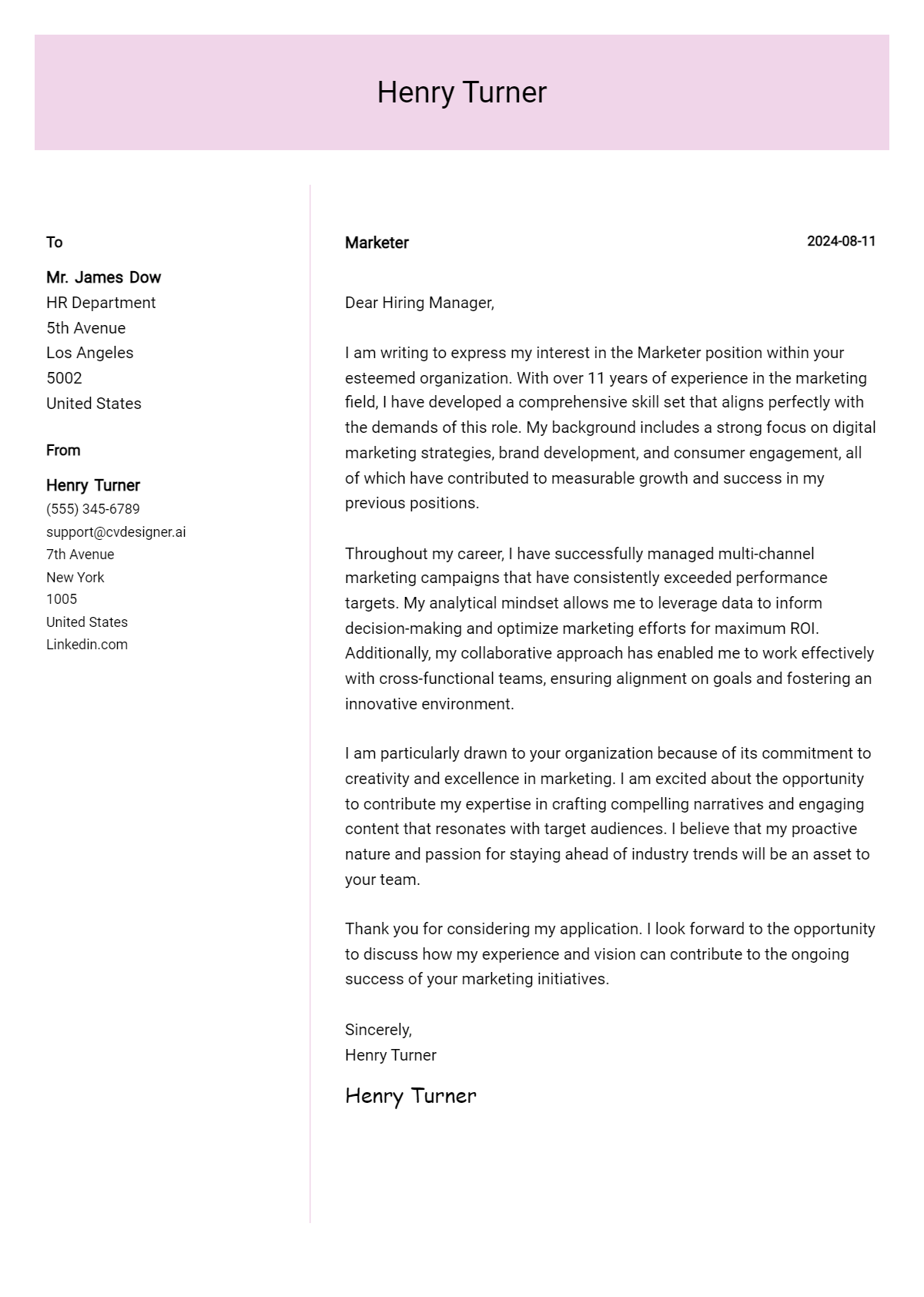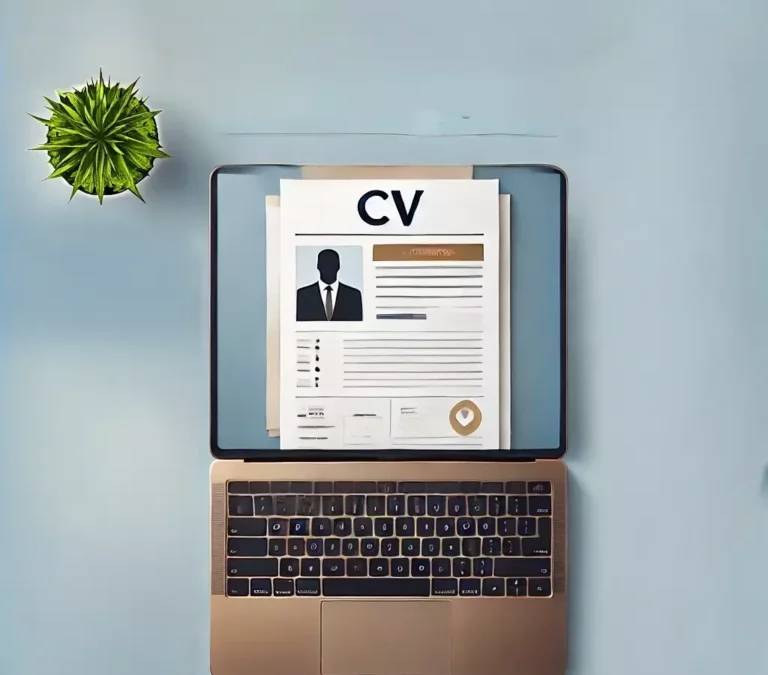Writing a cover letter can feel like an overwhelming task. But, when done correctly, it’s your golden ticket to landing that dream job. In this comprehensive guide, we’ll take you through everything you need to know about crafting a cover letter that stands out. Whether you’re a seasoned professional or just starting your career, this article will equip you with the insights and tools necessary to make a lasting impression.
Understanding the Purpose of a Cover Letter
A cover letter is more than just a formality. It serves as your personal introduction to a potential employer, offering a glimpse into your personality, enthusiasm, and how well you understand the role you’re applying for. But how exactly does a cover letter differ from a resume?
Your resume is a factual document—it lists your skills, experiences, and qualifications. On the other hand, a cover letter is a narrative. It’s your chance to tell the story behind your resume, to connect the dots, and to show how your past experiences have prepared you for this particular role.
Think of it this way: your resume is the “what” of your job application, while your cover letter is the “why.” It explains why you are the right fit for the position, why you want to work at that specific company, and why they should consider you over other candidates.
The Importance of a Cover Letter
Why does it matter? Employers receive hundreds of resumes for each job posting. A well-crafted cover letter can be the deciding factor between you and another candidate with similar qualifications. It demonstrates that you’ve taken the time to understand the company’s needs and that you’re genuinely interested in the position. Moreover, a cover letter allows you to showcase your communication skills, attention to detail, and ability to convey complex ideas succinctly.
In many cases, the cover letter serves as the first impression you make on a potential employer. It’s an opportunity to go beyond the bullet points of your resume and give the hiring manager a sense of who you are as a professional and as a person. This personal touch can make all the difference in a competitive job market.
Pro Tip: Always include a cover letter, even if it’s optional. It shows initiative and a strong interest in the role.
Use our Best Cover Letter Templates
Discover our top-tier Cover Letter templates, professionally designed to make a lasting impression. Choose from a variety of professional layouts to enhance your career prospects.
Research and Preparation
Before you put pen to paper—or fingers to keyboard—it’s crucial to do your homework. Researching the company and the job role is the first step in writing a tailored cover letter. The more you know about the company, the better you can tailor your cover letter to fit their specific needs and culture.
Research the Company and Job Role
Start by exploring the company’s website, particularly their “About Us” page. Understand their mission, values, and culture. Look for any recent news articles, press releases, or blog posts that give insight into their current projects or future plans. If the company has been in the news lately, mention that in your cover letter to show that you’re up-to-date with their developments.
- Mission and Values: Aligning your cover letter with the company’s mission shows that you’re a good cultural fit. For example, if a company values innovation, emphasize your creative problem-solving skills.
- Current Projects: Mentioning a current project or initiative shows that you’re invested in their success. This could be anything from a new product launch to a community outreach program.
- Company Culture: Understanding the culture will help you strike the right tone in your cover letter. Is the company formal and traditional, or do they embrace a more casual and creative environment? Your cover letter should reflect the company’s tone and style.
Pro Tip: If possible, reach out to current or former employees of the company on LinkedIn to gain more insights. This can give you an insider’s perspective that you can use to further tailor your cover letter.
Identify Key Skills and Qualifications
Carefully review the job posting. Highlight the key skills and qualifications that are required for the role. These will serve as the foundation for the body of your cover letter. But don’t stop there. Think about how your unique experiences and skills can add value beyond what’s listed in the job description.
For instance, if the job posting emphasizes leadership and project management skills, think about specific projects you’ve led and the outcomes you achieved. If they value collaboration and teamwork, reflect on how you’ve successfully worked with others in your previous roles.
In addition to the skills listed in the job description, consider what unspoken qualities the company might value. For example, a startup might value adaptability and a willingness to take on new challenges, while a larger corporation might prioritize reliability and consistency.
Pro Tip: Use a highlighter or note-taking app to mark the most important keywords and phrases in the job description. Then, be sure to use these keywords in your cover letter, as many companies use applicant tracking systems (ATS) that scan for specific terms.
Structuring Your Cover Letter
Now that you’ve done your research, it’s time to get down to the nitty-gritty of structuring your cover letter. A well-organized cover letter is easier to read and makes a stronger impression.
Basic Structure
A cover letter typically consists of three main sections: the introduction, the body, and the conclusion. Let’s break these down:
- Introduction: Briefly introduce yourself and state the position you’re applying for. This is also a great place to mention how you heard about the job. If you have a mutual connection, be sure to mention that here as well.
- Body: This is the meat of your cover letter. It’s where you’ll showcase your skills, experience, and why you’re a great fit for the role. You should aim to make two to three key points that align with the job description.
- Conclusion: Wrap up your letter with a strong closing statement. Express enthusiasm for the role and include a call to action, such as an invitation to discuss your application further. Reiterate your interest in the company and your eagerness to contribute.
Formatting Tips
When it comes to formatting, simplicity is key. Use a standard, professional font like Arial or Times New Roman, and keep your font size between 10 and 12 points. Your cover letter should be no longer than one page. Remember to align your text to the left, use single spacing, and leave a space between paragraphs.
In addition to the basics, consider the following:
- Margins: Use standard 1-inch margins on all sides. This ensures that your letter is easy to read and that there’s enough white space to avoid looking cluttered.
- Header: Include your contact information at the top, followed by the date and the employer’s contact information. This should be formatted similarly to a formal business letter.
- Salutation: Address the hiring manager by name if possible. If you can’t find their name, use a polite but generic salutation such as “Dear Hiring Manager.” Avoid using “To Whom It May Concern,” as it can come across as impersonal.
If you’re unsure about formatting, you can refer to our comprehensive guide on cover letter format.
Writing the Opening Paragraph
The opening paragraph of your cover letter is your chance to make a strong first impression. You need to grab the employer’s attention and make them want to keep reading.
Grabbing the Employer’s Attention
Start with a hook—something that will immediately capture their interest. This could be a mutual connection, a recent achievement, or a shared passion. A strong opening sets the tone for the rest of your letter and can differentiate you from other candidates.
Example:
“Dear [Hiring Manager’s Name],
I was thrilled to see the opening for [Job Title] at [Company Name], as I’ve long admired your commitment to [specific aspect of the company]. With my experience in [relevant experience], I am excited about the opportunity to contribute to your team.”
You could also open with a question or a statement that reflects your enthusiasm for the role:
Example:
“Have you ever met someone who is genuinely passionate about [industry/job role]? That’s me. When I discovered the opening for [Job Title] at [Company Name], I knew this was the opportunity I had been waiting for.”
Personalizing the Opening
Personalization is key. Address the hiring manager by name, and if possible, mention the specific project or product that caught your interest. Avoid generic openings like “To Whom It May Concern.” Personalizing your cover letter shows that you’ve taken the time to research and that you’re genuinely interested in the position.
Example:
“Dear [Hiring Manager’s Name],
I’m writing to apply for the [Job Title] position at [Company Name]. I’ve been following your recent work on [specific project] and am particularly excited about the potential to contribute to your team. With [number] years of experience in [relevant industry], I am confident that my skills align well with your current needs.”
By personalizing your introduction, you demonstrate to the employer that you’re not just looking for any job—you’re looking for this job, at this company.
Pro Tip: If you’re applying through a referral, make sure to mention the person who referred you in the opening paragraph. This can significantly increase your chances of getting noticed.
Showcasing Your Skills and Experience
This is where you can really shine. The body of your cover letter should connect your experience with the job requirements. But rather than just listing your qualifications, tell a story that illustrates how you’ve applied your skills in real-world situations.
Highlighting Relevant Experience
Start by identifying the key skills and qualifications listed in the job posting. Then, think about your past roles and how you’ve demonstrated those skills. Use specific examples to show how your experience makes you a perfect fit for the job
.
Example:
“In my previous role as [Your Previous Job Title], I led a team of [number] in developing [specific project], which resulted in [specific achievement]. This experience has equipped me with the skills to [relevant skill] and the ability to [another relevant skill].”
When highlighting your experience, make sure to use the language of the job posting. If the employer is looking for someone with “leadership” skills, describe your past leadership roles and the impact you had.
Pro Tip: If you’re a recent graduate or transitioning to a new industry, focus on transferable skills. For example, if you’re moving from sales to marketing, you might emphasize your communication skills, understanding of customer needs, and ability to develop strategies that drive results.
Using Quantifiable Achievements
Whenever possible, use numbers to quantify your achievements. Numbers add credibility to your claims and make your accomplishments more tangible. Employers love to see concrete evidence of your success, as it gives them a better idea of what you can achieve for them.
Example:
“At [Previous Company], I increased sales by 25% in the first quarter by implementing a new marketing strategy that targeted [specific audience].”
Quantifiable achievements not only demonstrate your success but also give the employer a clearer picture of the value you can bring to their team. Other examples of quantifiable achievements could include:
- Cost savings: “I managed a project that reduced operational costs by 15%.”
- Efficiency improvements: “I streamlined a process that decreased project turnaround time by 20%.”
- Customer satisfaction: “I implemented a new customer service protocol that improved satisfaction scores by 30%.”
The more specific you can be, the better.
Telling a Compelling Story
Beyond just listing your accomplishments, think about how you can weave them into a compelling narrative. Your cover letter should tell the story of your career—how you’ve grown, what you’ve achieved, and where you’re heading.
Example:
“My career in [industry] began at [Company Name], where I quickly realized my passion for [specific aspect of the job]. Over the past [number] years, I’ve honed my skills in [specific area], culminating in my most recent role at [Company Name], where I [specific achievement]. Now, I’m excited to bring my experience and passion to [Company Name] and contribute to your ongoing success.”
This approach not only highlights your skills and experience but also gives the employer a sense of your career trajectory and long-term goals.
Demonstrating Knowledge of the Company
Employers want to know that you’re not just looking for any job—you’re looking for a job with their company. Demonstrating your knowledge of the company and its goals is crucial.
Showing That You’ve Done Your Homework
Mention specific aspects of the company that appeal to you. This could be their mission, a recent project, or their impact in the industry. Relate this to your experience and explain how you can contribute to their success.
Example:
“I was particularly impressed by [Company Name]’s recent initiative to [specific initiative]. My experience in [relevant experience] aligns perfectly with this, and I’m excited about the possibility of contributing to [specific outcome].”
This shows the employer that you’ve taken the time to understand their business and that you’re genuinely interested in working with them.
Tailoring Your Cover Letter
Tailoring your cover letter to each job application is essential. Avoid using a generic cover letter for multiple applications. Instead, customize your letter to reflect the specific needs of the company. This extra effort shows that you’re serious about the role and that you’ve put thought into your application.
Consider the following when tailoring your cover letter:
- Company goals: How does the company’s mission align with your own professional goals? Mention this alignment in your cover letter.
- Recent developments: Has the company recently expanded, launched a new product, or undergone a significant change? Reference this in your cover letter to show that you’re keeping up with their progress.
- Company culture: If the company values creativity, for instance, emphasize your innovative ideas and approaches.
For more tips on how to tailor your letter, check out our cover letter templates.
Connecting Your Experience to the Company’s Future
Don’t just focus on what you’ve done—think about what you can do for the company in the future. How can your skills and experience help them achieve their goals? Make it clear that you’re not just looking for a job, but for a long-term relationship where you can contribute to the company’s success.
Example:
“With your recent expansion into [new market], I believe my experience in [relevant area] could be particularly valuable. I have a proven track record of [specific achievement], and I’m excited about the opportunity to bring my expertise to [Company Name] as you continue to grow.”
Addressing Potential Concerns
No career is without its challenges. Whether it’s a gap in employment, a career change, or a relocation, you may have some concerns that you need to address in your cover letter.
Handling Gaps in Employment
If you have a gap in your employment history, be upfront about it. Use this as an opportunity to explain what you’ve been doing during that time, whether it’s furthering your education, volunteering, or taking care of family responsibilities.
Example:
“After [number] years in [previous industry], I took a year off to [specific reason]. During this time, I [specific action taken], which allowed me to develop [specific skill or knowledge].”
Being transparent about your employment gaps shows integrity and gives you the chance to demonstrate that you’ve used your time productively.
Discussing Career Changes
If you’re changing careers, focus on the transferable skills that make you a great fit for the new role. Emphasize your enthusiasm for the new industry and your commitment to making a successful transition.
Example:
“While my background is in [previous industry], I’ve always been passionate about [new industry]. I’ve recently completed [specific course or certification], which has given me the skills and knowledge to excel in this field.”
Career changes can be daunting for both the candidate and the employer, but by showing that you’ve done your homework and are committed to the new field, you can alleviate potential concerns.
Addressing Relocation
If you’re applying for a job in a different city or country, you’ll need to address your willingness to relocate. Make it clear that you’re serious about the move and that you’ve considered the logistics.
Example:
“I am currently based in [current city], but I am excited about the opportunity to relocate to [new city]. I have already begun researching the area and am confident that I can make a smooth transition.”
Turning Potential Negatives into Positives
Every potential negative can be turned into a positive with the right framing. Be honest, but also be optimistic about how your experiences have prepared you for the role.
Example:
“While I haven’t worked in [specific industry] before, my experience in [related industry] has equipped me with strong [relevant skill] that I’m eager to apply in this new context.”
By addressing potential concerns head-on, you demonstrate self-awareness and a proactive approach to your career.
Writing a Strong Closing Paragraph
The closing paragraph of your cover letter should leave a lasting impression. It’s your final chance to express enthusiasm and to prompt the employer to take the next step.
Ending on a Positive Note
Your closing should be confident and optimistic. Reiterate your excitement about the role and your readiness to contribute to the company.
Example:
“I am eager to bring my [specific skill or experience] to [Company Name] and am confident that I can contribute to [specific outcome]. I would welcome the opportunity to discuss how my experience aligns with your needs.”
Your closing paragraph is your final opportunity to reinforce why you’re the right candidate for the job.
Including a Call to Action
Encourage the employer to contact you by including a call to action. This could be as simple as inviting them to schedule an interview or offering to provide additional information.
Example:
“I would be thrilled to discuss my application further and am available at your earliest convenience. Thank you for considering my application.”
A call to action creates a sense of urgency and encourages the employer to take the next step in the hiring process.
Examples of Effective Closings
Here are a few more examples of strong closing statements:
- “I look forward to the possibility of contributing to [Company Name] and am eager to discuss how I can support your team.”
- “Thank you for your time and consideration. I am excited about the opportunity to work with [Company Name].”
- “I am confident that my skills in [specific area] would be a valuable addition to your team. I look forward to the opportunity to discuss how I can contribute to your ongoing success.”
Common Mistakes to Avoid
Even the best cover letters can be derailed by common mistakes. By being aware of these pitfalls, you can ensure that your cover letter is polished and professional.
Avoiding Generic Cover Letters
One of the most common mistakes is using a generic cover letter for multiple applications. This approach is unlikely to impress employers, as it suggests a lack of genuine interest in the specific role.
Tip: Always tailor your cover letter to the job you’re applying for. Mention the company by name and refer to specific aspects of the job description.
Steering Clear of Overly Complex Language
While it’s important to be professional, avoid using overly complex language or jargon. Your cover letter should be easy to read and understand.
Tip: Use clear, concise language. Focus on communicating your points effectively
rather than trying to impress with big words.
Focusing on the Employer’s Needs
Another common mistake is focusing too much on yourself and not enough on the employer’s needs. Your cover letter should demonstrate how you can solve the employer’s problems and contribute to their success.
Tip: Shift the focus from what you want to what you can offer. Highlight how your skills and experience align with the company’s goals.
Following Instructions
Finally, be sure to follow any instructions provided in the job posting. This could include specific formatting guidelines or requests for additional information.
Tip: Carefully read the job posting and ensure that your cover letter complies with all requirements. Failing to do so could result in your application being overlooked.
Avoiding Typos and Errors
Typos and grammatical errors can make a bad impression. They suggest a lack of attention to detail and can detract from your professionalism.
Tip: Proofread your cover letter multiple times, and consider asking a friend or mentor to review it as well. Fresh eyes can often catch mistakes that you’ve overlooked.
Reviewing and Editing Your Cover Letter
Once you’ve written your cover letter, it’s crucial to review and edit it thoroughly. A polished cover letter is more likely to make a positive impression.
The Importance of Proofreading
Typos and grammatical errors can detract from your professionalism. Proofreading your cover letter is essential to catching these mistakes.
Tip: Read your cover letter out loud to catch any awkward phrasing or errors. Consider asking a friend or colleague to review it as well.
Proofreading isn’t just about finding typos—it’s also about ensuring that your letter flows well and clearly communicates your points.
Tips for Revising and Improving
Editing isn’t just about fixing mistakes—it’s also about improving your content. Look for ways to strengthen your statements, clarify your points, and ensure that your cover letter is compelling from start to finish.
Tip: Take a break after writing your cover letter, then return to it with fresh eyes. This can help you spot areas that need improvement.
Tools and Resources for Checking Grammar and Style
There are plenty of tools available to help you polish your cover letter. Consider using online grammar checkers like Grammarly, or style guides like The Elements of Style by Strunk and White.
Tip: While tools can be helpful, don’t rely on them entirely. Use them as a supplement to your own proofreading.
Finalizing Your Cover Letter
Before sending your cover letter, make sure that it’s formatted correctly, free of errors, and tailored to the job. Double-check that you’ve included all necessary information, such as your contact details and the job title.
Pro Tip: Save your cover letter as a PDF to preserve formatting and ensure that it looks the same on any device.
Examples of Great Cover Letters
Sometimes, the best way to learn is by example. Reviewing successful cover letters can give you a sense of what works and inspire you as you craft your own.
Analyzing a Few Successful Cover Letters
Let’s take a look at a few examples of cover letters that made a strong impression:
Example 1:
“Dear [Hiring Manager’s Name],
I am writing to express my interest in the [Job Title] position at [Company Name]. With a background in [relevant experience] and a passion for [specific aspect of the job], I believe I am uniquely qualified to contribute to your team. During my time at [Previous Company], I [specific achievement], which aligns closely with the goals of [Company Name]. I am excited about the opportunity to bring my skills to your organization and look forward to the possibility of discussing my application further.”
Example 2:
“Dear [Hiring Manager’s Name],
As a [Your Profession] with over [number] years of experience in [specific industry], I was thrilled to see the opening for [Job Title] at [Company Name]. I have long admired your work in [specific area], and I am particularly impressed by [specific project or initiative]. My experience in [relevant skill] has prepared me to contribute to [specific aspect of the job], and I am confident that my background would be a valuable addition to your team.”
What Makes Them Stand Out?
These cover letters stand out for several reasons:
- Personalization: Each letter is tailored to the specific company and job.
- Clarity: The language is clear and concise, making the candidate’s qualifications easy to understand.
- Relevance: Each letter highlights relevant skills and experiences, linking them directly to the job requirements.
These examples show how a well-crafted cover letter can make a powerful impact. They demonstrate that the candidate has taken the time to understand the company’s needs and has thoughtfully positioned themselves as the solution.
Lessons to Apply to Your Own Cover Letter
When crafting your own cover letter, keep these lessons in mind:
- Personalize your letter for each job application.
- Be clear and concise in your writing.
- Focus on relevant skills and experiences that align with the job requirements.
Remember, a great cover letter doesn’t just summarize your resume—it adds value by telling your story, highlighting your strengths, and showing how you can contribute to the company’s success.
Frequently Asked Questions
How long should a cover letter be?
Should I include my salary expectations in a cover letter?
Can I use the same cover letter for multiple applications?
Do I need a cover letter for every job application?
Should I mention a mutual connection in my cover letter?
What’s the best way to address a cover letter if I don’t know the hiring manager’s name?
How do I address employment gaps in my cover letter?
Conclusion
Writing a cover letter may seem daunting, but with the right approach, it can be a powerful tool in your job search. By understanding the purpose of a cover letter, structuring it effectively, and avoiding common mistakes, you can craft a letter that truly resonates with employers.
As you prepare to write your own cover letter, remember to personalize your approach, showcase your skills and experience, and demonstrate your knowledge of the company. With these tips in mind, you’re well on your way to creating a compelling cover letter that will help you land the job you’ve been dreaming of.
Looking for more resources to elevate your job search? Check out our cv examples, explore our cv templates, and try our cv builder to create a standout CV. Need help with your cover letter? We’ve got you covered with our cover letter templates and cover letter builder. Happy job hunting!








